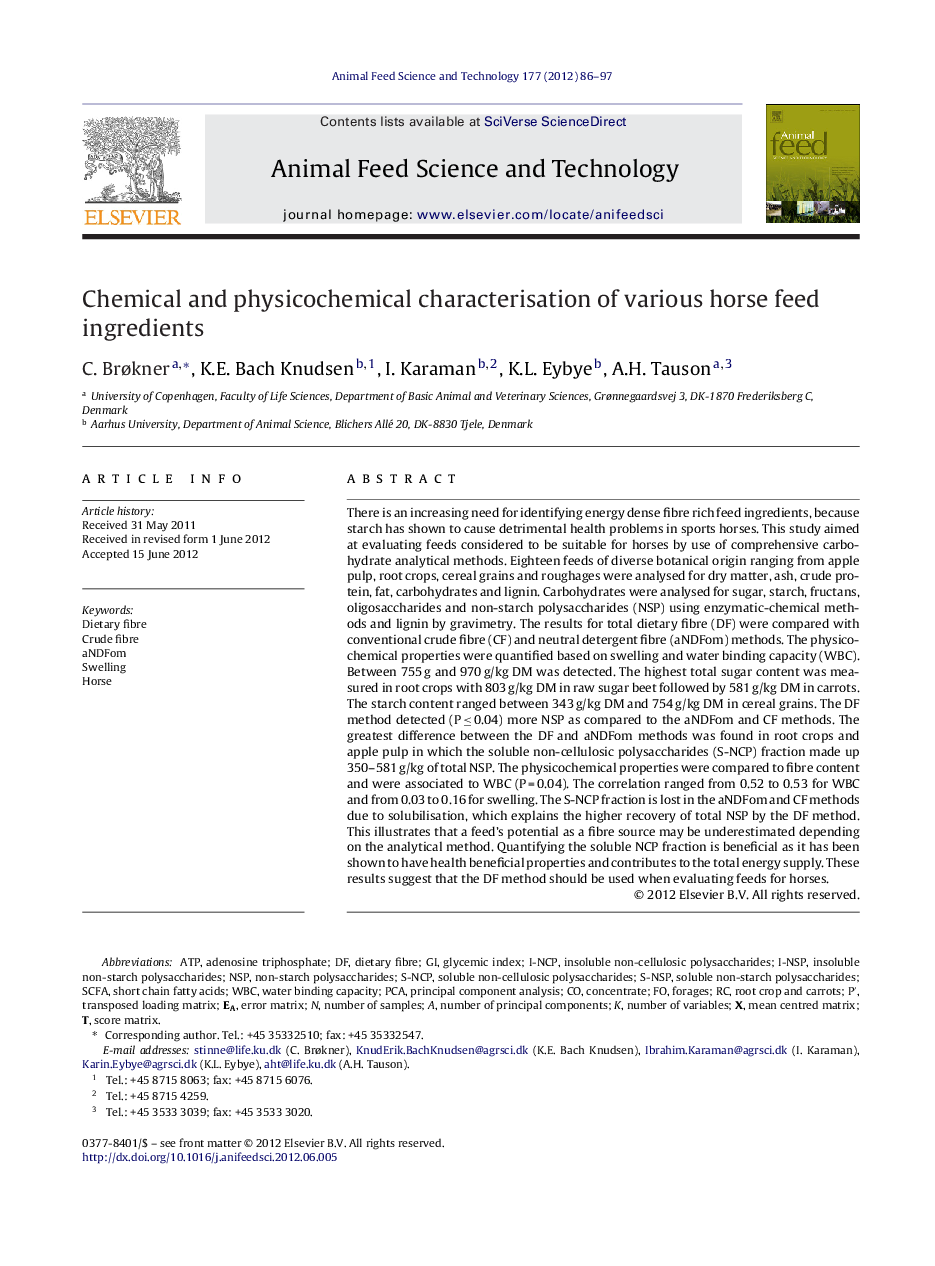| کد مقاله | کد نشریه | سال انتشار | مقاله انگلیسی | نسخه تمام متن |
|---|---|---|---|---|
| 8492018 | 1552413 | 2012 | 12 صفحه PDF | دانلود رایگان |
عنوان انگلیسی مقاله ISI
Chemical and physicochemical characterisation of various horse feed ingredients
دانلود مقاله + سفارش ترجمه
دانلود مقاله ISI انگلیسی
رایگان برای ایرانیان
کلمات کلیدی
aNDFomNSPSCFAWBCPCA - PCAAdenosine Triphosphate - آدنوزین تری فسفاتATP - آدنوزین تری فسفات یا ATPHorse - اسبShort chain fatty acids - اسیدهای چرب پایه کوتاهForages - برای سال هاPrincipal component analysis - تحلیل مولفههای اصلی یا PCANumber of samples - تعداد نمونه هاConcentrate - تمرکزGlycemic index - شاخص گلیسمیکwater binding capacity - ظرفیت اتصال به آبCrude fibre - فیبر خامdietary fibre - فیبرهای غذایی یا فیبرهای رژیمیError matrix - ماتریس خطاSwelling - ورمnon-starch polysaccharides - پلی ساکارید غیر نشاسته
موضوعات مرتبط
علوم زیستی و بیوفناوری
علوم کشاورزی و بیولوژیک
علوم دامی و جانورشناسی
پیش نمایش صفحه اول مقاله

چکیده انگلیسی
There is an increasing need for identifying energy dense fibre rich feed ingredients, because starch has shown to cause detrimental health problems in sports horses. This study aimed at evaluating feeds considered to be suitable for horses by use of comprehensive carbohydrate analytical methods. Eighteen feeds of diverse botanical origin ranging from apple pulp, root crops, cereal grains and roughages were analysed for dry matter, ash, crude protein, fat, carbohydrates and lignin. Carbohydrates were analysed for sugar, starch, fructans, oligosaccharides and non-starch polysaccharides (NSP) using enzymatic-chemical methods and lignin by gravimetry. The results for total dietary fibre (DF) were compared with conventional crude fibre (CF) and neutral detergent fibre (aNDFom) methods. The physicochemical properties were quantified based on swelling and water binding capacity (WBC). Between 755 g and 970 g/kg DM was detected. The highest total sugar content was measured in root crops with 803 g/kg DM in raw sugar beet followed by 581 g/kg DM in carrots. The starch content ranged between 343 g/kg DM and 754 g/kg DM in cereal grains. The DF method detected (P â¤Â 0.04) more NSP as compared to the aNDFom and CF methods. The greatest difference between the DF and aNDFom methods was found in root crops and apple pulp in which the soluble non-cellulosic polysaccharides (S-NCP) fraction made up 350-581 g/kg of total NSP. The physicochemical properties were compared to fibre content and were associated to WBC (P = 0.04). The correlation ranged from 0.52 to 0.53 for WBC and from 0.03 to 0.16 for swelling. The S-NCP fraction is lost in the aNDFom and CF methods due to solubilisation, which explains the higher recovery of total NSP by the DF method. This illustrates that a feed's potential as a fibre source may be underestimated depending on the analytical method. Quantifying the soluble NCP fraction is beneficial as it has been shown to have health beneficial properties and contributes to the total energy supply. These results suggest that the DF method should be used when evaluating feeds for horses.
ناشر
Database: Elsevier - ScienceDirect (ساینس دایرکت)
Journal: Animal Feed Science and Technology - Volume 177, Issues 1â2, 11 October 2012, Pages 86-97
Journal: Animal Feed Science and Technology - Volume 177, Issues 1â2, 11 October 2012, Pages 86-97
نویسندگان
C. Brøkner, K.E. Bach Knudsen, I. Karaman, K.L. Eybye, A.H. Tauson,